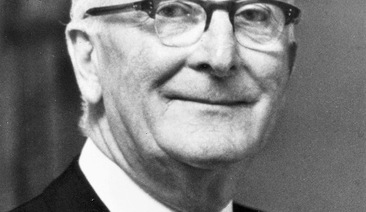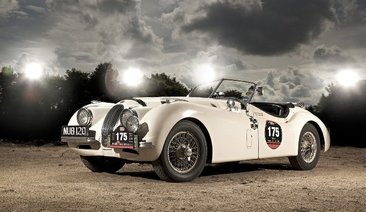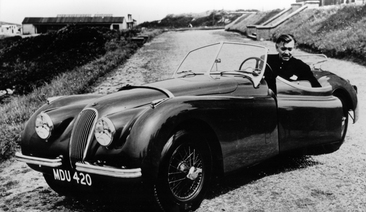News



MR. JAGUAR
No matter whether you’ve been behind the wheel of one of these elegant automobiles or wished to do so one day, you’re sure to find the company’s heritage intriguing.
The brainchild behind Jaguar was William Lyons. The Englishman was born in 1901 to a music store keeper in Blackpool. Who could predict that the young man with a fancy for motorcycles and a vocation of creating sidecars at his Swallow Sidecar Company would one day be knighted Sir William Lyons by the Queen of England (a Jaguar customer herself) for developing one of the most distinguished automobile brands in the world?
A LYON BEHIND EVERY JAGUAR
With a sense of style and vision no-doubt ahead of his time, Lyons had a meticulous, stern business sense — hiring only the best in their fields and addressing them formally by their surnames. He garnered a fine attention to detail, ensuring that his personality and tastes were clearly evident in every design. However, prototypes did make one last traditional stop before hitting the market — to Wappenbury Hall, Lyons’ mansion, where his wife Greta would offer the final blessing.
Despite Lyons’ adoration for elegance, engineering integrity, and an autocratic business style, his personal mantra was “value for the money.” The first car he designed in 1931 was called the SS 1. The eye-catching design caused quite a stir among the press. The Motor newspaper wrote that the SS 1 (which set the stage for the first real Jaguar) “was a car built for the connoisseur but is relatively low priced. All the attributes of sports models are incorporated in a refined manner, and this, coupled with a striking appearance, is bound to attract enthusiastic motorists.”
Next came the SS 100 model (shown above) and its 3.5 liter engine. Lyons’ knack for public pea- cockery stunned dealers at an auto convention when he unveiled the attractive speedy sports car at a cost half of what they expected. Demand was so dramatic that production switched from a wood body to steel construction.
GOOD TASTE, PRUDENT JUDGEMENT
Lyons was a man focused on high style and high performance, but he was also a man of thrift — a trait that caught even his own employees by surprise. A humorous anecdote illustrating Lyons’ frugality was included in The Jaguar Scrapbook by Peter Philip:
When visiting a Jaguar showroom, Lyons was approached by a sales manager who asked for permission to replace the worn carpet. “Certainly not” was Lyons’ reply, adding that there was plenty of wear left in the flooring. When Lyons returned to the showroom a few months later and found new carpeting had been installed, he was outraged. He confronted the sales manager about why his orders not to change the carpeting had been disobeyed.
The sales manager was quick to explain. “What I have done, Sir William, is to turn them around. Half of each strip was under the show cabinets at the side of the room, and there- fore not worn. So now that I have reversed them, the worn area is under the cabinets.“
Lyons was impressed. “Right, my man. I want you at Wappenbury Hall, nine o’clock on Monday morning. You can do the same thing for me at home,” Lyons said.
WAR AND CHANGE
During World War II, the company helped in the effort by manufacturing airplane parts and other items, but Lyons always had his engineers investi- gating ways to improve production and performance of his cars. Post-war rekindled the production of saloons (sedans) but the company stopped producing the SS 100. A negative connotation had developed during the war that led Lyons to drop the SS name for good: “Schutzstaffel,” the name of the group formed to protect Adolf Hitler, became known as the SS.
The next few decades brought a long series of legendary Jaguar models. At the 1948 Motor Show, Jaguar unveiled the XK 120 featuring an unprece- dented engine which produced 160 bhp. The Mark VII stole the headlines at the 1950 Motor Show. Later that year, Lyons attended the races at Le Mans and decided Jaguar should design a race car. The XK120C — the first C-type — was soon born and debuted with a remarkable racing victory. Sadly, it was a victory preceded by a great tragedy for Lyons. The day prior to the race, his only son was killed in a car accident on the way to Le Mans.
AN AUTOMOTIVE ICON
In 1961, Jaguar released the E-type, an instant sensation. More than 70,000 E-types were built over the next decade, the majority for American drivers. But as popular as the E-type was, the finest Jaguar saloon to date would hit the market in 1968: The XJ6. The masterpiece would be Lyons’ last before retirement in 1972.
William Lyons — Mr. Jaguar — would be pleased at the 2011 outlook for his company. The Wall Street Journal calls the 2011 XJ “The Hottest Cat on the Road!”.